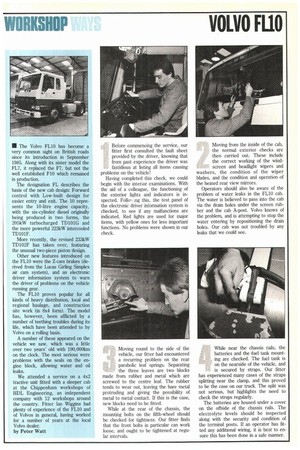• The Volvo FL10 has become a very common sight
Page 129

If you've noticed an error in this article please click here to report it so we can fix it.
on British roads since its introduction in September 1985. Along with its sister model the FL7, it replaced the F7, but not the well established FIO which remained in production.
The designation FL describes the basis of the new cab design: Forward control with Low-built design for easier entry and exit. The 10 represents the 10-litre engine capacity, with the six-cylinder diesel originally being produced in two forms, the 205kW turbocharged TD101G and the more powerful 223kW intercooled TD101F.
More recently, the revised 233kW TD102F has taken over, featuring the unusual two-piece piston design.
Other new features introduced on the FL10 were the Z-cam brakes (de rived from the Lucas Girling Simplex air cam system), and an electronic driver information system to warn the driver of problems on the vehicle running gear.
The FL10 proves popular for all kinds of heavy distribution, local and regional haulage, and construction site work (in 8x4 form). The model has, however, been afflicted by a number of teething troubles during its life, which have been attended to by Volvo on a rolling basis.
A number of these appeared on the vehicle we saw, which was a little over two years' old with 190,000km on the clock. The most serious were problems with the seals on the engine block, allowing water and oil leaks.
We attended a service on a 4x2 tractive unit fitted with a sleeper cab at the Chippenham workshops of HDL Engineering, an independent company with 12 workshops around the country. Fitter Ian Wiggins had plenty of experience of the FL10 and of Volvos in general, having worked for a number of years at the local Volvo dealer.
by Peter Watt




















































































































































